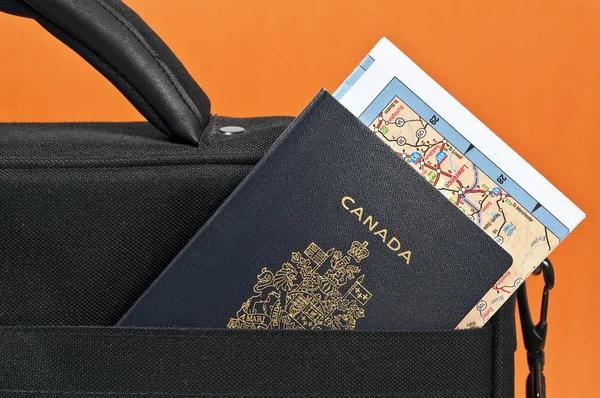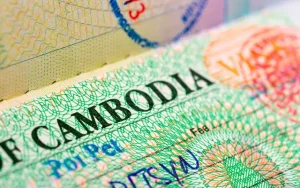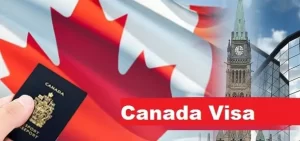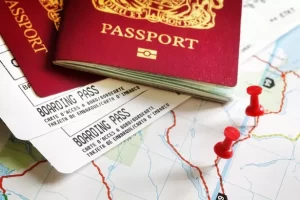
Welcome to our blog, where we unravel the mysteries of Canada’s visitor visas! Whether you’re planning a scenic getaway or seeking new adventures in the Great White North, understanding the various types of visitor visas available is essential. From exploring picturesque landscapes and vibrant cities to experiencing Canadian culture firsthand, this guide will help you navigate through the sea of options and find the perfect visa for your dream trip. So buckle up and get ready to embark on a thrilling journey as we demystify Canada’s visitor visa landscape like never before! CANADA VISITOR VISA
Introduction to Canada Visitor Visas
Canada is a popular destination for tourists and visitors from all around the world. With its breathtaking natural landscapes, vibrant cities, and welcoming multicultural society, it’s no surprise that millions of people choose Canada as their vacation spot or temporary residence every year.
If you are planning to visit Canada for tourism, business purposes, or to visit family and friends, you will most likely need a visitor visa. In this section, we will provide an introduction to Canada visitor visas, including what they are, who needs them, and how to apply for one.
What is a Visitor Visa?
A visitor visa is an official document issued by the Canadian government that allows foreign nationals to enter and stay in Canada temporarily. It is also known as a temporary resident visa (TRV) and is required for citizens of countries that are not exempt from entry requirements into Canada.
A visitor visa does not grant permanent residency or work authorization in Canada. Instead, it allows individuals to enter the country for a specific purpose and period of time. The length of stay allowed by a visitor visa can vary from six months up to 10 years. CANADA VISA FOR AUSTRALIAN CITIZENS
Types of Canada Visitor Visas:
1. Temporary Resident Visa (TRV):
The Temporary Resident Visa, also known as a visitor visa, is the most common type of visa for individuals visiting Canada for tourism, business or family purposes. It allows visitors to stay in Canada for a maximum period of six months and can be either single-entry or multiple-entry. A single-entry visa permits one entry into Canada while a multiple-entry visa allows visitors to enter and exit the country multiple times within its validity period.
2. Super Visa:
The Super Visa is specifically designed for parents and grandparents of Canadian citizens or permanent residents who wish to visit their family in Canada for an extended period of time. This is a multiple-entry visa that can be valid for up to 10 years, allowing eligible applicants to stay in Canada for up to two years at a time without the need to renew their status.
3. Electronic Travel Authorization (eTA):
An eTA is an electronic travel authorization that was introduced in 2016 and is mandatory for all visa-exempt foreign nationals traveling by air to Canada. It is valid for five years or until the expiration date of your passport, whichever comes first, and allows visitors from select countries to enter and stay in Canada for up to six months at a time.
4. Work Permit Holder’s Spouse or Common-Law Partner Open Work Permit:
This type of visitor visa is available exclusively to spouses or common-law partners of foreign workers who hold a valid work permit in Canada.
Eligibility requirements:
To be eligible for a Temporary Resident Visa, applicants must meet the following criteria:
1. A valid passport: The first step in applying for a TRV is to have a valid passport from your home country. Your passport must be valid for at least six months beyond your planned date of departure from Canada.
2. Purpose of travel: Applicants must clearly state their purpose of travel and provide documents supporting it. For example, if you are traveling for tourism purposes, you may need to show proof of hotel reservations or an itinerary. If you are visiting family or friends in Canada, you will need an invitation letter from them.
3. Financial support: Applicants must demonstrate that they have sufficient funds to cover their expenses during their stay in Canada. This includes accommodation costs, transportation expenses, and living costs.
4. Strong ties to home country: To ensure that the applicant will return to their home country after their temporary stay in Canada, they must provide evidence of strong ties to their home country. This could include employment letters, property ownership documents, or bank statements.
Electronic Travel Authorization (eTA) is an entry requirement for visa-exempt foreign nationals who are traveling to Canada by air. It is a new electronic system introduced by the Canadian government in 2015, replacing the traditional paper-based process for visitor visas. This streamlined process makes it easier and faster for travelers to enter Canada, while also enhancing security measures.
Who needs an eTA?
An eTA is required for citizens of countries that do not require a visa to enter Canada. This includes visitors from countries such as the United States, Australia, Japan, and several European nations. However, visitors from visa-exempt countries who are entering Canada by land or sea do not need an eTA; they can present their valid travel documents at the border.
How does it work?
The application process for an eTA is simple and straightforward. It can be completed online through the official Government of Canada website or through a mobile app. The applicant will need to provide personal information such as their name, date of birth, passport details, and contact information. They will also need to answer some basic eligibility questions related to health and criminality.
Once the application is submitted along with the processing fee of CAD $7, it will be processed within a few minutes in most cases. In some cases, additional documents may be requested or further processing may be required which could take up to several days.
An approved eTA is valid for up to five years or until the expiration date
Super Visa is a special type of visitor visa that allows parents and grandparents of Canadian citizens or permanent residents to stay with their loved ones in Canada for an extended period. It was introduced by the Canadian government in 2011 as a way to reunite families and promote family ties.
The Super Visa is valid for up to 10 years, and it grants multiple entries into Canada during this time. This means that the visa holder can come and go from Canada as many times as they want within the validity period, without having to reapply each time. It is an excellent option for those who wish to visit their children or grandchildren frequently without the hassle of applying for a new visa every few months.





